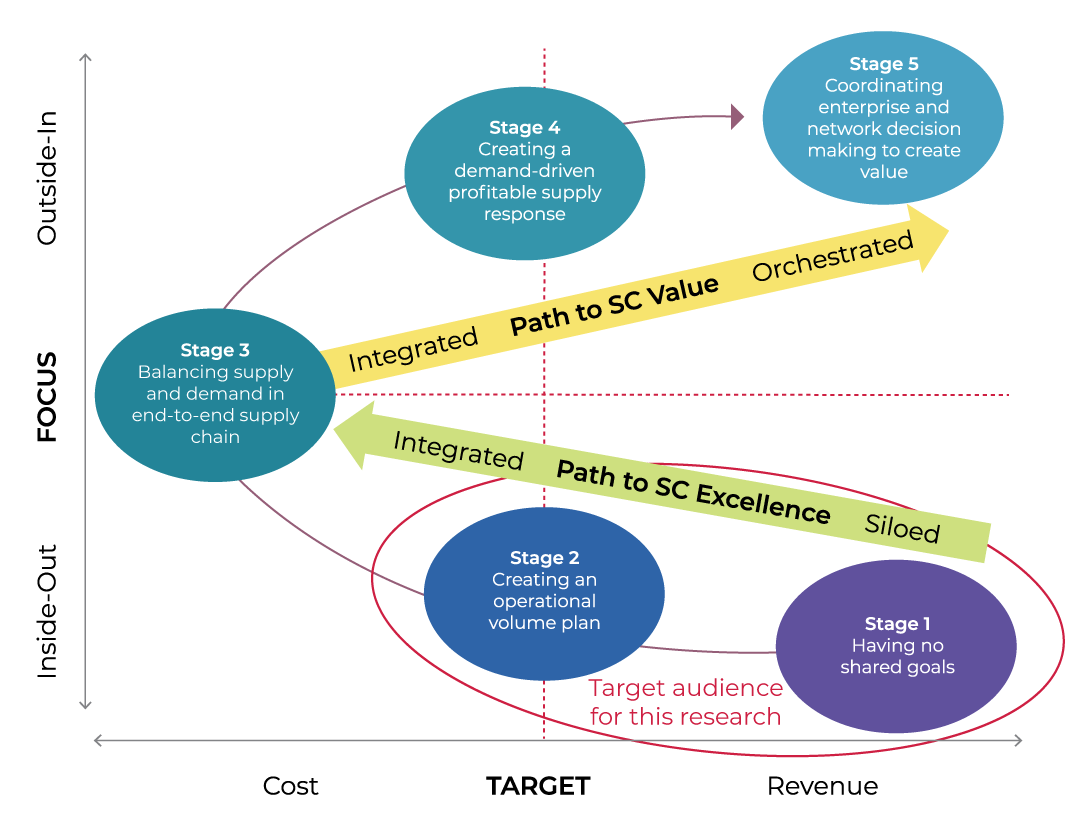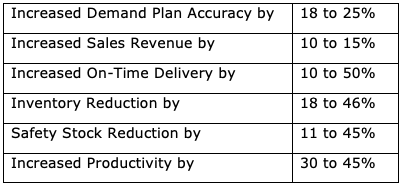S&OP process has been around for a long time. Many corporations have tried the S&OP journey with mixed success. The process has evolved over the years. Even though the concept behind this process is simple, many corporations have struggled to adopt it. Gartner has proposed an S&OP maturity model based on its research.
 Source: Gartner (February 2015)
Source: Gartner (February 2015)
Figure: The Five-Stage S&OP Maturity Model
To be successful in S&OP, businesses need to start with People, Process, and Technology – in that order. However, for all three to work in some form of coordination, there needs to be orchestration, organizational pull, and leadership. This is where the sustainability of the process breaks down.
According to industry surveys, the best scenario achieved by the S&OP process is to do supply/demand balance with a heavy Supply Chain/Operations focus. It is generally led by mid-level managers in supply chain or operations organization. It generally does not consider or align with business or marketing or finance strategy. Even though, in and of itself, supply/demand balancing is a valuable exercise with its inherent benefit, it generally does not address the business strategy, e.g., maximize profit margin or lower operating cost. Even though the terms may sound like two sides of a coin, the supply chain response could be quite different.
To take the business performance to the next higher level, thought leaders in this space have proposed the adoption of Integrated Business Planning (IBP). A comprehensive definition of IBP has been provided by Colleen Crum from Oliver Wight, a leading consulting firm in Integrated Business Planning:
A process led by senior management that evaluates and revises time-phased projections for demand, supply, new product development, strategic projects, and the resulting financial plans. This is done on a monthly basis, on a planned 24-month rolling horizon. It is a decision-making process that realigns the tactical plans for all business functions in all geographies to support the company’s business goals and targets. A primary objective of S&OP/IBP is to reach consensus on a single operating plan, to which executives of the management team hold themselves accountable and allocates the critical resources of people, equipment, inventory, materials, time, and money to most effectively satisfy customers in a profitable way.
Here are the key characteristics of IBP, which differentiates IBP from S&OP:
- Senior executive management ownership and leadership
- Integration of strategic plans, initiatives, and activities
- Integration of product and portfolio review
- Integration of financial planning
- Improved simulation, modeling, scenario planning, and analysis
- Gap identification and gap closure analysis
- Easy, effective translation of aggregate plans to detail plans, up and down the data hierarchy
- Improved trust across a cross-functional team
The key difference between S&OP and IBP is that IBP starts at the executive level. Each month or planning cycle, the IBP process culminates in a Management Business Review in which the executive team reviews the latest projections, potential gaps in achieving business and strategic objectives, gap closing options as well as resource projections to execute the plan. With strong leadership by the executive team, over time, the business begins to think in terms of the overall health and welfare of the company, rather than optimizing a function at the expense of the overall company benefits. These are the key differences between the S&OP and the IBP. Companies that achieve the greatest benefits from IBP use the process as a collaborative, cross-functional management process led by the executive team for running the business – which is the essence of IBP.
Is the Journey Worth the Trouble?
Here is a sampling of the range of improvements achieved by 40 Oliver Wight clients who embarked on the IBP journey:

What if a company can improve its performance by the above amounts? What would be the impact on financial performance and/or customer satisfaction?
A study by Aberdeen Research sheds some light on the answers to previous questions. The following data are the results documented by companies using Integrated Business Planning, categorized by best in class, industry average, and industry laggards.

Conclusion
Even though the implementation of IBP takes greater effort than S&OP, the journey is well worth it based on the financial gains presented above. In today’s fast-changing world, the IBP process brings the necessary nimbleness to the organization to cope with and address business challenges.
Enjoyed this post? Subscribe or follow Arkieva on Linkedin, Twitter, and Facebook for blog updates.





